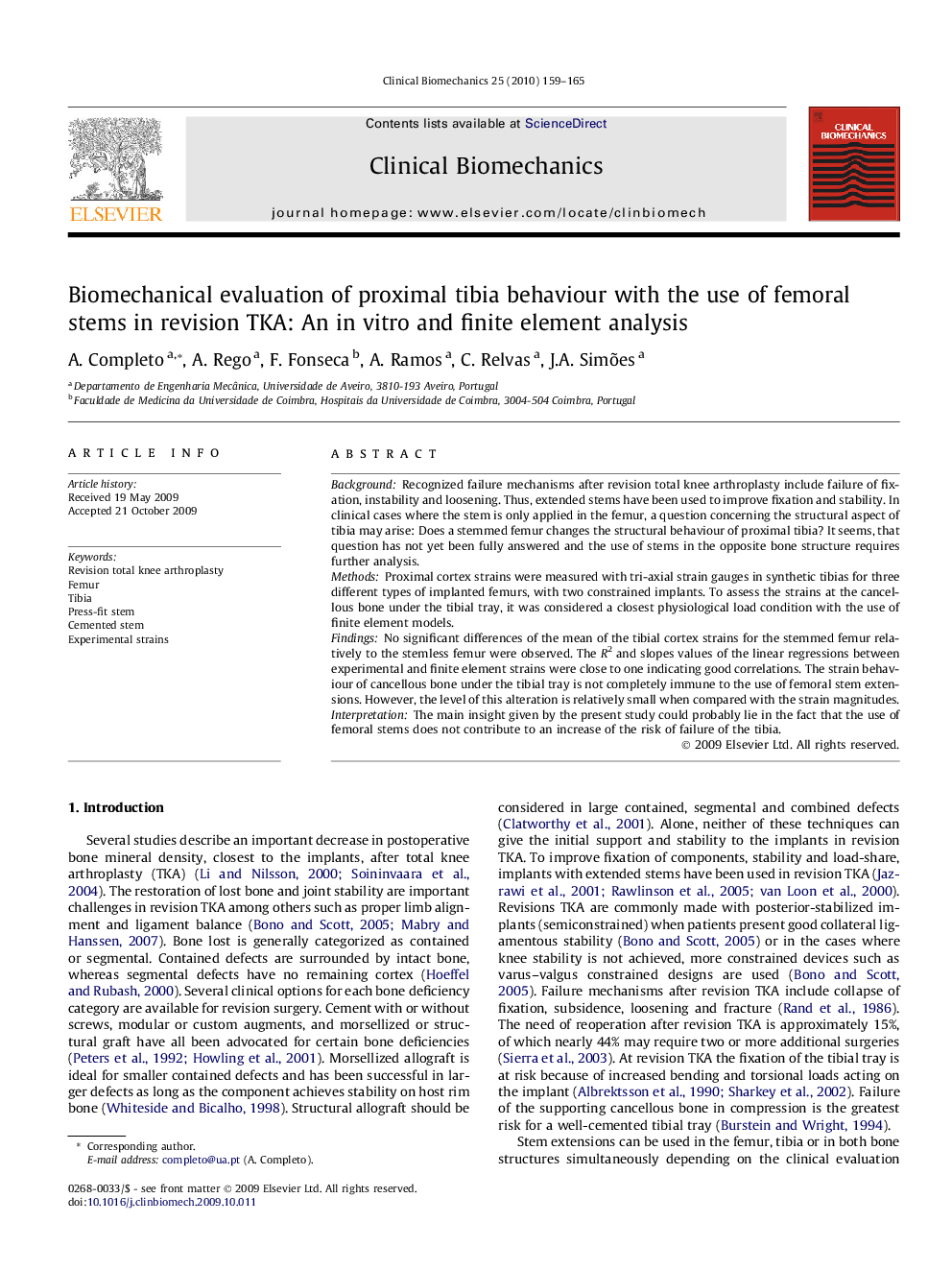| Article ID | Journal | Published Year | Pages | File Type |
|---|---|---|---|---|
| 4051185 | Clinical Biomechanics | 2010 | 7 Pages |
BackgroundRecognized failure mechanisms after revision total knee arthroplasty include failure of fixation, instability and loosening. Thus, extended stems have been used to improve fixation and stability. In clinical cases where the stem is only applied in the femur, a question concerning the structural aspect of tibia may arise: Does a stemmed femur changes the structural behaviour of proximal tibia? It seems, that question has not yet been fully answered and the use of stems in the opposite bone structure requires further analysis.MethodsProximal cortex strains were measured with tri-axial strain gauges in synthetic tibias for three different types of implanted femurs, with two constrained implants. To assess the strains at the cancellous bone under the tibial tray, it was considered a closest physiological load condition with the use of finite element models.FindingsNo significant differences of the mean of the tibial cortex strains for the stemmed femur relatively to the stemless femur were observed. The R2 and slopes values of the linear regressions between experimental and finite element strains were close to one indicating good correlations. The strain behaviour of cancellous bone under the tibial tray is not completely immune to the use of femoral stem extensions. However, the level of this alteration is relatively small when compared with the strain magnitudes.InterpretationThe main insight given by the present study could probably lie in the fact that the use of femoral stems does not contribute to an increase of the risk of failure of the tibia.
